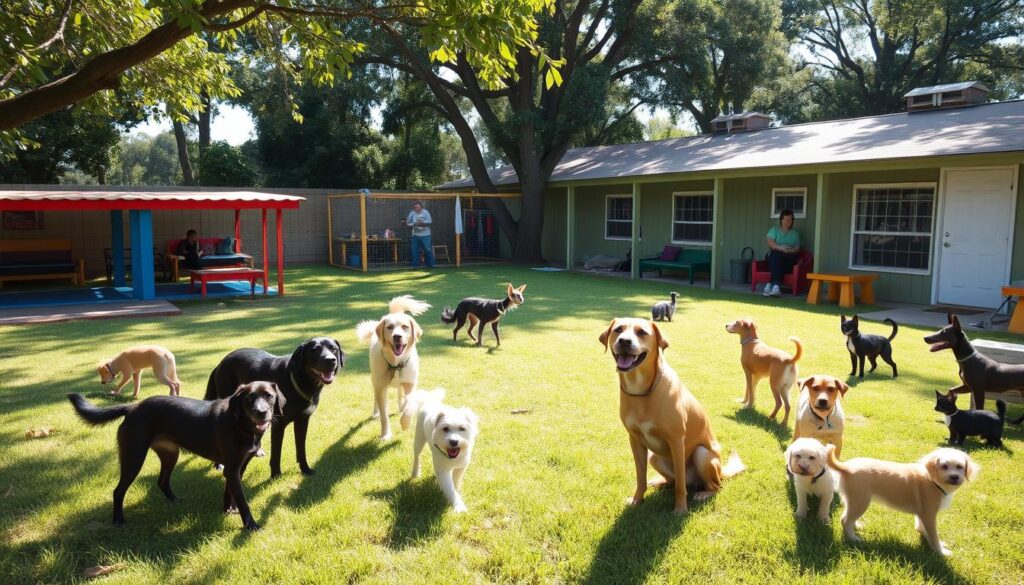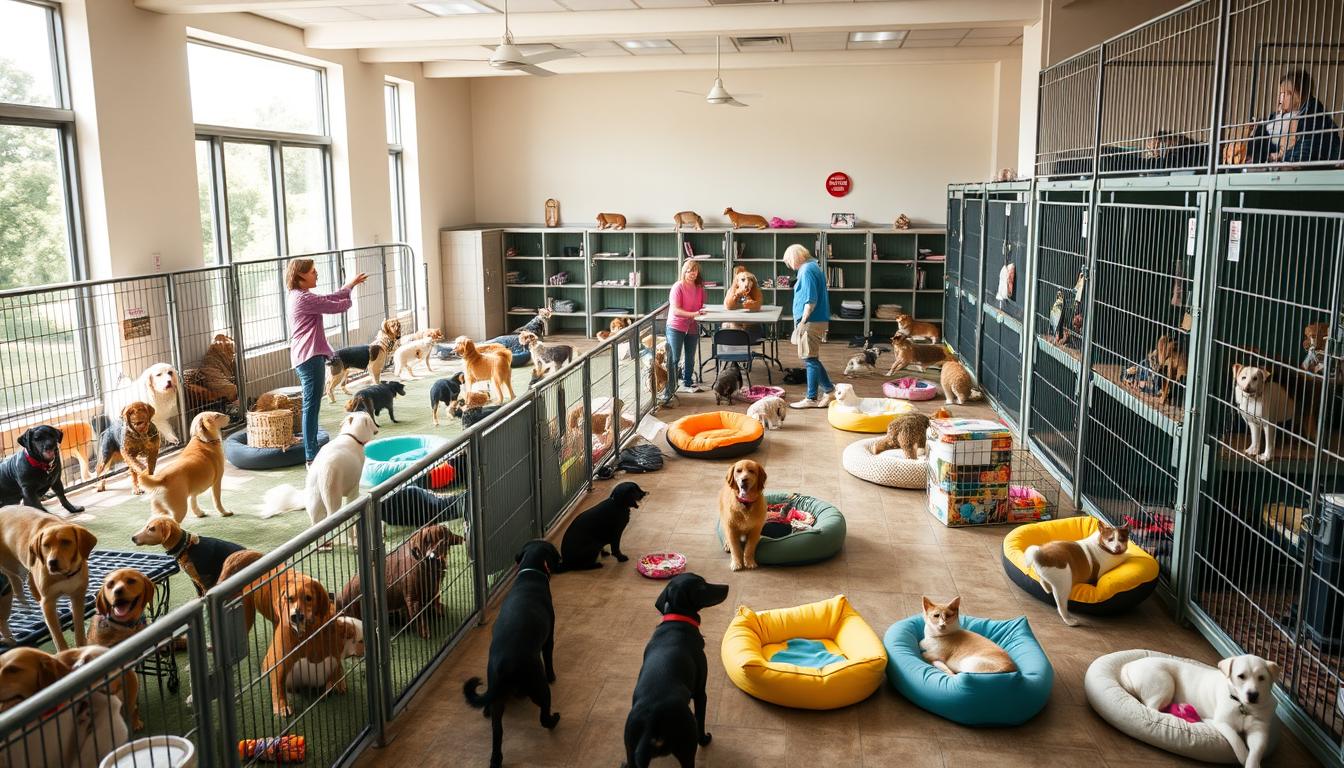Kill shelters are a harsh reality in the world of animal shelters, where pets are euthanized due to overcrowding and limited resources. The term “kill shelter” is often associated with animal shelters that put down healthy and adoptable animals, including dogs and cats. This practice is a result of the overwhelming number of animals in shelters, with many being labeled as pit bulls, which wait three times longer to be adopted compared to other breeds.
Animal shelters, including kill shelters, play a significant role in pet adoption, but the process can be flawed. Mislabeling of breeds, such as pit bulls, can significantly impact their adoption rates. The experience of one author, who rescued 11 pets, including 2 shelter dogs and 1 shelter cat, highlights the potential trend of disclosure issues in shelters. This anecdotal account, although not quantifiable, suggests that shelters may deliberately mislabel dogs, affecting animal welfare and rehoming statistics.
The reality of kill shelters is alarming, with PETA’s shelter in Virginia taking in 3,117 dogs and cats in 2023, resulting in a save rate of less than 21%. In contrast, over 62% of all shelters in the United States are at or above the no-kill threshold of 90%. This disparity highlights the need for community support and resources to reduce the number of healthy animals euthanized in kill shelters, ultimately making pet adoption a more successful and humane process.
The Dark Reality Behind “Humane” Euthanasia
Euthanasia, a term often associated with animal welfare, is a complex issue that raises questions about the true definition of a kill shelter. The reality is that many shelters resort to euthanasia due to overcrowding, limited resources, and a lack of adopters. According to shelter statistics, approximately 1.2 million dogs are euthanized in shelters each year in the United States due to behavior problems.
The term “convenience killing” is used to describe practices that certain organizations are accused of defending or perpetuating. This has led to a growing concern about the treatment of animals in shelters and the need for more humane solutions. The Humane Society of the United States (HSUS) has been involved in efforts to ban gas chambers in shelters, which would protect tens of thousands of animals from painful deaths.
Some key statistics that highlight the issue of euthanasia in shelters include:
- Approximately 99% placement rate achieved by one successful shelter director who resisted working with larger organizations.
- Roughly six months is identified as the time it takes for newly hired staff at large organizations to realize the reality of their environment, leading to potential moral compromises.
- Large organizations reportedly collect and hoard hundreds of millions of dollars in donations and grants intended for animal welfare.
These statistics demonstrate the need for a closer look at the animal welfare system and the role of euthanasia in shelters. By examining the shelter statistics and the treatment of animals, we can work towards creating a more humane and compassionate system that prioritizes animal welfare.
Why You Can’t Trust a Kill Shelter: The Hidden Agenda
Kill shelters have a hidden agenda that can be detrimental to the animals in their care and the people who adopt them. The lack of transparency and trustworthiness of these shelters can lead to misrepresentation of the breed and behavior of animals, as seen in the story of a person who adopted a dog from a shelter that was not truthful about the dog’s breed and behavior.
This lack of trust can have severe consequences, including the return of adopted animals to the shelter due to unforeseen behavioral issues. To avoid such situations, it is essential to promote animal shelter trust and support shelters that prioritize pet adoption over euthanasia. The kill shelter agenda must be exposed, and the public must be made aware of the importance of adopting from reputable shelters.
Some of the reasons why kill shelters cannot be trusted include:
- Lack of transparency in their operations and policies
- Misrepresentation of animal breed and behavior
- Prioritization of euthanasia over adoption and rehabilitation
By understanding the hidden agenda of kill shelters and promoting animal shelter trust, we can work towards a future where all animals have a chance at a happy and healthy life. It is crucial to support shelters that prioritize pet adoption and rehabilitation over euthanasia, ultimately putting an end to the kill shelter agenda.
The No-Kill Alternative: A Better Way Forward

No-kill shelters are revolutionizing the way we approach animal welfare, providing a humane alternative to traditional kill shelters. By prioritizing community involvement and animal rehabilitation, these shelters are able to significantly improve the lives of animals in need. The success of no-kill shelters can be seen in the statistics, with approximately 50,000 animals saved annually in California due to laws preventing shelters from killing animals if there is a rescue group willing to take them.
One of the key benefits of no-kill shelters is their focus on rehabilitation and adoption. Unlike kill shelters, which often have high euthanasia rates, no-kill shelters work to find forever homes for their animals. This approach not only saves lives but also promotes a sense of community involvement, with many shelters offering volunteer opportunities and outreach programs. The impact of no-kill shelters can be seen in the lives of the animals they serve, with many going on to become beloved pets and companions.
Success Stories from No-Kill Shelters
There are many success stories from no-kill shelters, with animals being adopted and thriving in their new homes. For example, a dog that was once considered unadoptable due to behavioral issues may find a forever home with a patient and loving owner. These stories highlight the importance of community involvement and the need for support for no-kill shelters. By working together, we can create a world where every animal has a chance at a happy and healthy life.
Community Impact and Involvement
No-kill shelters rely on community involvement to operate, with many shelters offering volunteer opportunities and outreach programs. By getting involved, community members can help make a difference in the lives of animals in need. This not only promotes a sense of community but also helps to raise awareness about the importance of animal welfare and the need for no-kill shelters. Some ways to get involved include:
- Volunteering at a local no-kill shelter
- Donating to support animal rehabilitation and adoption programs
- Spreading the word about the importance of no-kill shelters and animal welfare
By working together, we can create a world where every animal has a chance at a happy and healthy life, and where no-kill shelters are the norm, not the exception.
Debunking Common Myths About Shelter Overcrowding
Shelter overcrowding is a significant issue in the United States, with approximately 3.1 million dogs housed in shelters. However, the main cause of shelter overcrowding is not a lack of space, but rather a lack of adopters and a surplus of animals. One of the common myths about shelter animals is that they are not healthy or well-behaved, but this is largely exaggerated or unfounded.
Some of the reasons why people do not adopt from shelters include concerns over behavior, health, and socialization. But the truth is that shelters have animals of every age, including puppies, kittens, and seniors, and most pets who enter the shelters are healthy. In fact, shelters typically treat health issues before making animals available for adoption.
To address shelter overcrowding, it is essential to promote animal adoption and pet population control. Some ways to do this include spay and neuter programs, community involvement, and education about the benefits of adopting from shelters. By working together, we can reduce the number of animals in shelters and find them forever homes.
- Approximately 1.5 million animals are euthanized in shelters each year due to overcrowding.
- Shelters have available animals of every age, including puppies, kittens, and seniors.
- Adopting a rescue animal typically incurs less financial burden compared to purchasing a purebred animal from a breeder.
By debunking common myths about shelter overcrowding and promoting animal adoption and pet population control, we can make a difference in the lives of millions of animals in shelters. So, the next time you think about getting a pet, consider adopting from a shelter and give a loving home to a deserving animal.
Taking Action: Your Role in Creating Change for Shelter Animals
As we’ve seen, the reality behind kill shelters is far from the “humane” image they often portray. But the good news is that you can make a real difference in the lives of shelter animals.Animal shelter reform,pet adoption, andcommunity involvementare key to creating positive change.
Start by volunteering at your local no-kill shelter. These shelters rely on dedicated community members to provide care, socialization, and enrichment for the animals. Even a few hours a week can make a huge impact. You can also consider adopting a furry friend – give a loving home to a deserving pet in need.
Beyond that, get involved in advocating for shelter reform in your community. Attend local government meetings, support legislation that promotes no-kill policies, and spread awareness about the realities of kill shelters. Together, we can work to transform the system and ensure all shelter animals receive the compassionate care they deserve.
With your help, we can create a future where no healthy, adoptable animal is euthanized simply due to limited space or resources. It’s time to stand up and be the voice for those who can’t speak for themselves. Are you ready to join the movement for change?
FAQ
What is the difference between a kill shelter and a no-kill shelter?
How many animals are euthanized in kill shelters each year?
Why can’t you trust a kill shelter?
What are the benefits of a no-kill shelter?
What causes shelter overcrowding?
How can I get involved in creating change for shelter animals?

Marissa Delotta, 36, from Dayton, Ohio, is the creative force behind Roverboard.com, a beloved online destination for dog lovers. As a dedicated mom and canine enthusiast, Marissa combines her family experiences with her love for dogs to offer a platform where dog owners can exchange tips, heartwarming stories, and advice. Her website has become a vibrant community for sharing the joys of dog parenting. In her free time, Marissa enjoys exploring dog parks with her family and volunteering at local animal shelters.





